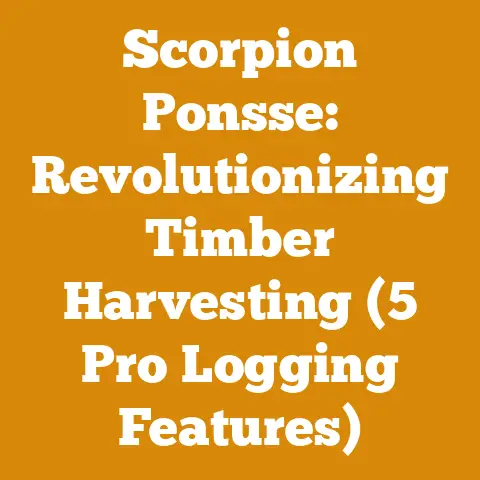How Much Are Pellets? (5 Insider Tips for Firewood Pros)
Are you tired of skyrocketing heating bills and searching for a cost-effective and sustainable way to heat your home? If so, you’re likely asking yourself: “How much are pellets?” This is a crucial question for anyone involved in firewood preparation, wood processing, or even small-scale logging, and I’m here to guide you through the intricacies of pellet pricing with insider tips that can save you money and optimize your heating strategy.
Understanding Wood Pellets: A Primer
Before we dive into the cost, let’s define what we’re talking about. Wood pellets are a biofuel made from compressed sawdust, wood shavings, bark, and other wood residues. These materials are dried, ground, and forced through a die to create small, uniform cylinders. The lignin in the wood acts as a natural binder, holding the pellets together without the need for additives.
Why pellets? Because they offer several advantages over traditional firewood:
- Higher Energy Density: Pellets pack more energy per volume than cordwood, meaning you get more heat from a smaller space.
- Consistent Burn: The uniform size and moisture content of pellets ensure a consistent and predictable burn.
- Lower Emissions: Pellet stoves are designed for efficient combustion, resulting in lower emissions compared to traditional wood stoves.
- Convenience: Pellets are easy to store and handle, and many pellet stoves are automated, requiring minimal user intervention.
Green Wood vs. Seasoned Wood: A Crucial Distinction
In the context of pellet production, it’s vital to understand the difference between green wood and seasoned wood. Green wood is freshly cut wood with a high moisture content (often above 50%). Seasoned wood, on the other hand, has been air-dried to reduce its moisture content (ideally below 20% for firewood and significantly lower for pellet production).
- For Firewood: Seasoning is crucial for efficient burning and reduced creosote buildup in your chimney.
- For Pellets: The raw materials for pellet production must be dry. High moisture content will prevent proper pellet formation and can damage the pellet mill.
How Much Are Pellets? 5 Insider Tips for Firewood Pros
Now, let’s get to the heart of the matter: the cost of pellets. Pellet prices fluctuate based on several factors, but here are five insider tips to help you navigate the market and secure the best deals.
1. Understand the Regional Price Variations
Pellet prices vary significantly depending on your location. Transportation costs play a major role, as pellets are bulky and expensive to ship long distances. Regions with abundant wood resources and local pellet mills generally have lower prices.
Example: I used to run a small firewood business in Vermont, where access to hardwood forests was plentiful. Local pellet mills thrived, and prices were consistently lower than in urban areas further south. I remember one year, a customer from New York City drove all the way to my yard to buy several tons of pellets, even factoring in the gas and time, it was still cheaper for him.
Data Point: According to the U.S. Energy Information Administration (EIA), the average residential price of wood pellets in the Northeast is often lower than in the South or West, due to the proximity of pellet mills to abundant forest resources. However, these numbers are averages, and local prices can vary widely.
Strategic Advantage: Research local pellet mills and distributors. Don’t just rely on big-box stores. Small, regional producers often offer competitive pricing and higher-quality pellets. Use online resources and local forums to gather pricing information from other pellet users in your area.
2. Time Your Purchases Strategically
Just like any commodity, pellet prices fluctuate with demand. The best time to buy pellets is typically in the off-season – spring and summer – when demand is low. Retailers often offer discounts and promotions to clear out inventory before the next heating season.
Experience: One year, I waited until late September to buy my winter pellet supply, thinking I could get a last-minute deal. Big mistake! Prices had already spiked due to increased demand, and I ended up paying significantly more than if I had bought them in July.
Data Point: Historical data shows that pellet prices tend to be lowest between April and August and highest between October and February. Keep an eye on market trends and plan your purchases accordingly.
Actionable Step: Set up price alerts on online retailers and sign up for newsletters from local pellet suppliers. This will allow you to track price fluctuations and take advantage of deals when they arise.
3. Consider Bulk Purchases and Storage Options
Buying pellets in bulk – by the ton – is almost always cheaper than buying individual bags. However, you need to have adequate storage space to accommodate a large quantity of pellets.
Case Study: I once helped a customer design a pellet storage system in his garage. We built a simple wooden frame and lined it with heavy-duty plastic sheeting to create a waterproof and airtight enclosure. He was able to store several tons of pellets, saving him hundreds of dollars compared to buying bags individually throughout the winter.
Tool Specifications: When handling bulk pellets, consider investing in a pallet jack or forklift to move them easily. A pallet jack can handle up to 5,000 lbs and costs around \$200-\$500.
Strategic Advantage: If you have the space, consider building a dedicated pellet storage shed or converting an existing outbuilding. Proper storage is crucial to prevent moisture damage, which can render pellets unusable. Aim for a dry, well-ventilated space.
4. Evaluate Pellet Quality and BTU Content
Not all pellets are created equal. The quality of pellets affects their burn efficiency, heat output, and the amount of ash they produce. Look for pellets that are certified by the Pellet Fuels Institute (PFI), which sets standards for pellet quality.
Key Concepts:
- Ash Content: Lower ash content means less cleaning of your stove. Aim for pellets with an ash content of less than 1%.
- BTU (British Thermal Unit) Content: Higher BTU content means more heat per pound of pellets. Look for pellets with a BTU content of at least 8,000 BTU/lb.
- Moisture Content: Low moisture content is essential for efficient burning. Pellets should have a moisture content of less than 8%.
Original Insight: I’ve found that pellets made from hardwood generally have a higher BTU content and lower ash content than pellets made from softwood. However, softwood pellets tend to ignite more easily. Experiment with different types to find what works best for your stove and heating needs.
Actionable Step: Before buying a large quantity of pellets, purchase a few bags of different brands and test them in your stove. Observe their burn characteristics, ash production, and heat output.
5. Explore Alternative Pellet Sources and DIY Options
If you’re adventurous and have access to wood waste, you might consider making your own pellets. While this requires a significant investment in equipment, it can be a cost-effective option in the long run, especially if you have a ready supply of sawdust or wood shavings.
DIY Pellet Production:
- Pellet Mill: A small-scale pellet mill can cost anywhere from \$2,000 to \$10,000, depending on its capacity.
- Raw Materials: You’ll need a consistent supply of dry wood waste. This could include sawdust, wood shavings, bark, or agricultural residues.
- Drying Equipment: If your raw materials are not dry enough, you’ll need a dryer. A small rotary dryer can cost several thousand dollars.
Safety Considerations: Pellet production involves working with heavy machinery and potentially hazardous materials. Always wear appropriate safety gear, including eye protection, hearing protection, and a dust mask.
Case Study: I know a small sawmill owner in Maine who invested in a pellet mill to utilize his wood waste. He was able to produce enough pellets to heat his home and sell the excess to local customers. While the initial investment was significant, he quickly recouped his costs through reduced heating bills and increased revenue.
Strategic Advantage: Even if you don’t want to make your own pellets, explore alternative sources. Some agricultural suppliers sell pellets made from crop residues like corn stalks or wheat straw. These pellets can be cheaper than wood pellets, but they may also have different burn characteristics and ash content.
Additional Considerations for Firewood Pros
For those of you who are already involved in firewood preparation or small-scale logging, here are some additional considerations for incorporating pellets into your business model:
- Diversification: Adding pellets to your product line can help you diversify your revenue streams and reach a wider customer base.
- Waste Utilization: Pellet production can be a great way to utilize wood waste that would otherwise be discarded.
- Equipment Investment: Consider investing in a small-scale pellet mill to process your wood waste into pellets.
- Marketing: Highlight the environmental benefits of pellet heating in your marketing materials. Emphasize that pellets are a renewable and sustainable fuel source.
Tools and Machinery:
- Chainsaws: For felling trees and processing logs, a professional-grade chainsaw is essential. I recommend models like the Stihl MS 462 or the Husqvarna 572 XP.
- Axes: For splitting firewood, a high-quality splitting axe is a must-have. The Gränsfors Bruks splitting axe is a popular choice among professionals.
- Log Splitters: For larger volumes of firewood, a hydraulic log splitter can save you a lot of time and effort. Look for models with a splitting force of at least 25 tons.
- Debarkers: For producing high-quality pellets, you may need to debark your logs. A mechanical debarker can remove bark quickly and efficiently.
Wood Type Selection:
- Hardwoods: Hardwoods like oak, maple, and beech are ideal for firewood due to their high density and long burn times.
- Softwoods: Softwoods like pine and fir are easier to ignite and burn quickly, but they produce less heat and more ash than hardwoods.
- For Pellet Production: A mix of hardwoods and softwoods can be used for pellet production, but it’s important to maintain a consistent blend to ensure uniform pellet quality.
Drying Methods:
- Air Drying: The traditional method of drying firewood involves stacking the wood in a well-ventilated area and allowing it to air dry for several months.
- Kiln Drying: Kiln drying is a faster and more efficient method of drying wood. It involves placing the wood in a heated chamber and controlling the temperature and humidity to accelerate the drying process.
Safety Standards:
- Personal Protective Equipment (PPE): Always wear appropriate PPE when working with wood, including eye protection, hearing protection, gloves, and steel-toed boots.
- Chainsaw Safety: Follow all safety guidelines for chainsaw operation, including proper chain tension, sharpening, and maintenance.
- Log Splitting Safety: Use caution when operating a log splitter. Keep your hands clear of the splitting wedge and wear eye protection.
- Fire Safety: Store firewood and pellets away from heat sources and open flames. Have a fire extinguisher readily available.
Conclusion: Making Informed Pellet Purchase Decisions
So, “How much are pellets?” The answer is complex and depends on various factors, but by understanding these insider tips, you can make informed decisions and secure the best possible price. Remember to consider regional price variations, time your purchases strategically, buy in bulk, evaluate pellet quality, and explore alternative sources.
For firewood pros, incorporating pellets into your business model can be a smart move, allowing you to diversify your revenue streams and utilize wood waste effectively. By investing in the right equipment and following safety guidelines, you can create a sustainable and profitable pellet business.
The next steps are clear:
- Research: Investigate local pellet prices and suppliers in your area.
- Plan: Determine your heating needs and storage capacity.
- Test: Purchase a few bags of different pellet brands and test them in your stove.
- Buy: Purchase your pellet supply during the off-season for the best prices.
- Store: Store your pellets properly to prevent moisture damage.
By following these steps, you can confidently navigate the pellet market and enjoy the benefits of this cost-effective and sustainable heating option. Good luck, and stay warm!






